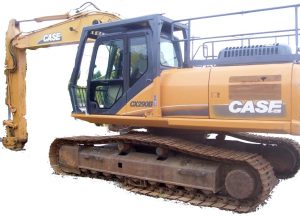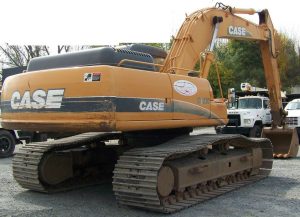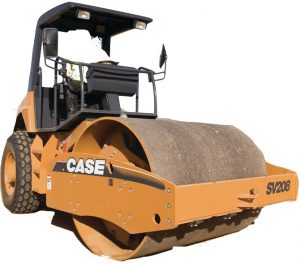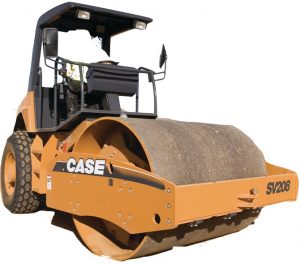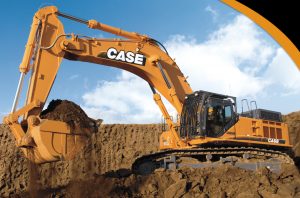Complete digital official shop manual contains service, maintenance, and troubleshooting information for the Case CX290B Crawler Excavators. Diagnostic and repair procedures are covered in great detail to repair, maintain, rebuild, refurbish or restore your Case CX290B Crawler Excavators like a professional mechanic in local service/repair workshop. This cost-effective quality manual is 100% complete and intact as should be without any missing pages. It is the same factory shop manual used by dealers that guaranteed to be fully functional to save your precious time.
This manual for Case CX290B Crawler Excavators is divided into different sections. Each section covers a specific component or system and, in addition to the standard service procedures, includes disassembling, inspecting, and assembling instructions. A table of contents is placed at the beginning of each section. Pages are easily found by category, and each page is expandable for great detail. It is in the cross-platform PDF document format so that it works like a charm on all kinds of devices. You do not need to be skilled with a computer to use the manual.
“87673891 B.pdf”
Case CX290B Crawler Excavators Service Manual
Replaces 87673891
Issued February 2010
87673891 B
EXCERPT:
TABLE OF CONTENTS
DIVISION/SECTION SECTION N° REFERENCE N°
1 GENERAL INFORMATION
Safety, general information and standard torque data 1001 7-27691EN
General specifications and special torque setting 1002 SM290B1002-1NA
2 ENGINE
Removal and installation of the engine 2000 SM290B2000-0EN
Removal and installation of the fuel cooler, engine inter-cooler, radiator and oil cooler. 2001 SM290B2001-0EN
Removal and installation of the turbo charger 2004 SM290B2004-0EN
Removal and installation of EGR cooler and EGR valve 2005 SM350B2005-0EN
Removal and installation of the engine hood 2006 SM350B2006-0EN
Engine specifications.*
Disassembly and assembly of the engine *
3 FUEL SYSTEM
Removal and installation of the fuel tank. 3001 SM290B3001-0EN
Removal and installation of the supply pump and common rail 3004 SM290B3004-0EN
Removal and installation of the injectors – 3005 SM350B3005-0EN
Fuel engine system – *
4 ELECTRICAL SYSTEM
Service connector kit 4000 SM350B4000-1EN
Electrical and engine functions and service support 4001 SC210B4001-2EN
Removal and installation of the starter motor – 4004 SM290B4004-0EN
Removal and installation of the alternator – 4005 SM350B4005-0EN
Electrical equipment and electrical circuit diagrams. 4020 SM210B4020-1EN
Engine error code (DTC) 4021 SM350B4021-0EN
Main body error code (DTC) 4022 SM210B4022-0EN
Troubleshooting, 6HK1 engine 4023 SM350B4023-0EN
5 UNDERCARRIAGE
Removal and installation of tracks – 5001 SM290B5001-0EN
Rollers – 5003 SM290B5003-0EN
Take-up roller 5005 SM290B5005-0EN
Removal and installation of grease cylinder – 5006 SM290B5006-0EN
Disassembly and assembly of grease cylinder. 5007 SM290B5007-0EN
6 DRIVE TRAIN
Removal and installation of the drive motor and final drive transmission. 6001 SM350B6001-0EN
Disassembly and assembly of the drive motor and final drive transmission. 6002 SM350B6002-0EN
Removal and installation of the swing motor and swing reduction gear 6003 SM290B6003-0EN
Disassembly and assembly of the swing reduction gear 6004 SM350B6004-0EN
7 UNDERCARRIAGE HYDRAULICS
* Consult the Engine Service Manual
8 UPPERSTRUCTURE HYDRAULICS
Specifications, troubleshooting, checks and hydraulic pressure settings8001 SC290B8001-0NA
Removal and installation of the hydraulic reservoir 8002 SM290B8002-0EN
Removal and installation of the main hydraulic pump.8003 SM350B8003-0EN
Removal and installation of the main hydraulic control valve.8004 SM290B8004-0EN
Removal and installation of the attachment cylinders.8005 SM350B8005-0EN
Removal and installation of the hydraulic swivel – 8006 SM290B8006-0EN
Removal and installation of the pilot blocs.8007 SM290B8007-0EN
Disassembly and assembly of the main hydraulic pump 8010 SM290B8010-0EN
Disassembly and assembly of the main hydraulic control valve 8011 SM350B8011-0EN
Disassembly and assembly of the attachment cylinders 8012 SM130B8012-0EN
Disassembly and assembly of the hand control levers – 8013 SM130B8013-0EN
Disassembly and assembly of the foot control levers – 8014 SM160B8014-1EN
Disassembly and assembly of the cushion valve8016 SM290B8016-0EN
Removal and installation of the safety valve – 8017 SM350B8017-0EN
Disassembly and assembly of the hydraulic swivel 8018 SM290B8018-0EN
Disassembly and assembly of the swing motor 8019 SM290B8019-0EN
Hydraulic functions – 8020 SC290B8020-0NA
Hydraulic component functions8030 SC290B8030-0NA
9 UPPERSTRUCTURE
Removal and installation of the counterweight – 9002 SM290B9002-0EN
Removal and installation of the boom, dipper and bucket 9003 SM350B9003-0EN
Removal and installation of the seat 9004 SM130B9004-0EN
Removal and installation of the cab and cab equipment 9005 SM130B9005-0EN
Air conditioner functions and troubleshooting.9006 SC210B9006-3EN
Air conditioning unit 9007 SM130B9007-0EN
Air conditioning components9009 SM290B9009-0EN
Large size hydraulic schematics – Pocket 87601004A
Large size electrical schematics – Pocket 87601010A
1 Removal
[1] Use a hexagon wrench (5 mm) to remove the 4 bolts
(1), and then remove the air breather (2) on the hydraulic oil tank.
[2] Attach the specialty adapter (3) to the area where the air breather was removed, and set the vacuum pump.
Create negative pressure in the hydraulic oil tank using the vacuum pump (4).
[3] Use a wrench (19 mm) to remove the bolts (5), and then remove the center cover (6).
[4] Use a hexagon wrench (8 mm) to remove the 8 hexagon bolts, and then remove the hoses (8) and (9).
Next, use a wrench (41 mm) to remove the hose (7), use a wrench (36 mm) to remove the hoses (10) and (11), and use a wrench (22 mm) to remove the hose (12).
• Mark the swing motor and hoses so that the connectors can be matched during assembly.
• Attach caps or plugs to the swing motor and hoses to prevent any entry of water, dust or dirt.
• Clean the swing motor and hoses by spraying them
with a parts cleaner to prevent scratching and prevent dirt from accumulating on the connectors.
[5] Use a wrench (19 mm) to remove the bolts (13), and then remove the under cover (14).
[6] Use a wrench (13 mm) to remove the bolt (15) on the clamp (16) for the hose.
[7] Use a wrench (19 mm) to remove the grease hose (18) that feeds grease to the swing motor reduction gear bearing.
[8] Use a box wrench (36 mm) to remove the 12 bolts (20) from the swing unit.
[9] Wrap the wire rope (20) around the swing motor and lift it with a crane.
• A knock pin (19) is driven into the installation section of the swing unit. Apply lubricating oil to the knock pin and pull it out together with the main unit of the swing motor while hitting with a hammer [10]Thoroughly check that the location is safe before lowering the swing unit on wood planks (21).
• Thoroughly secure the swing unit so that it does not fall over.
2 Installation
[1] Perform the reverse of the removal procedure. When installing the swing unit, be careful with the position of the knock pin.
The tightening torque for the bolts for installing the swing unit on the swing frame is 784 – 914 Nm.
[2] Before driving, be sure to fill the inside of the motor casing with hydraulic oil from the drain port (1).
Thoroughly perform air bleeding from the air bleed port (2).
Use the level gauge (3) to check that gear oil for the reduction gear is filled to the stipulated volume.
…
